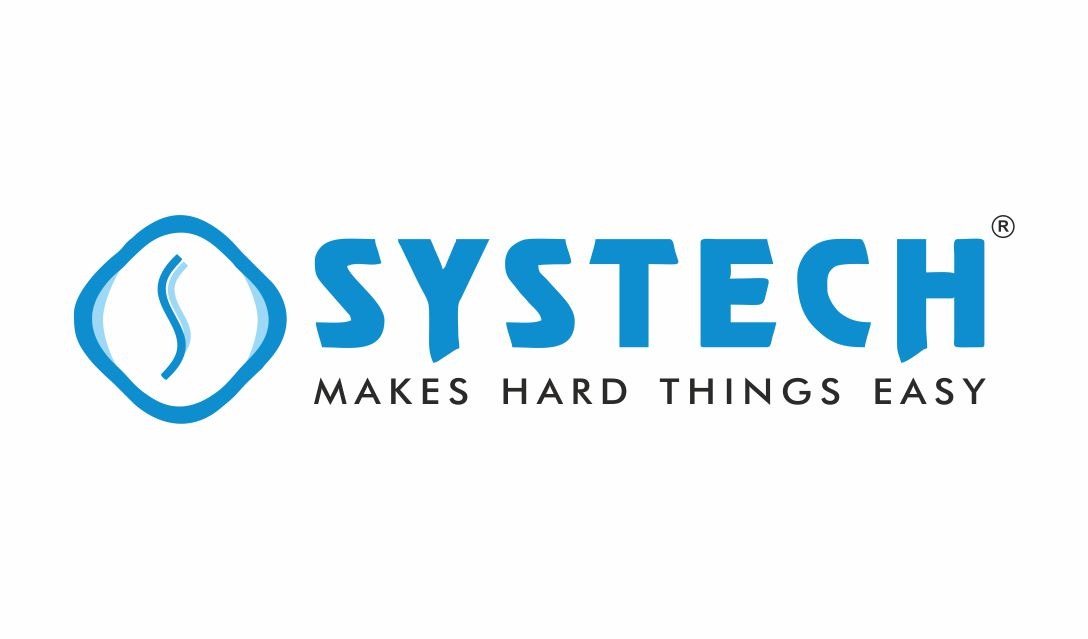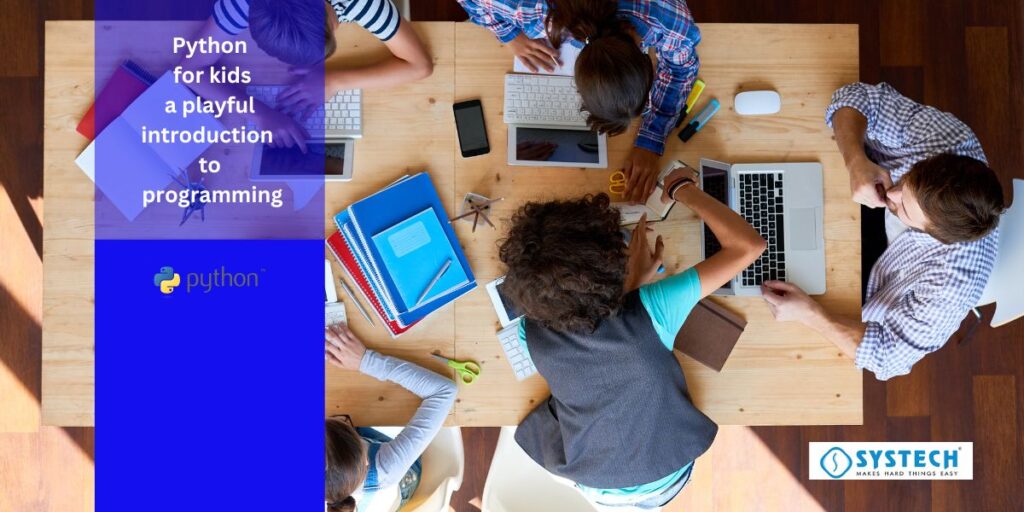Python’s simplicity and readability make it an excellent choice for beginners. It is known as a “high-level” language, meaning it’s designed to be easy for humans to understand and write. With Python, you can start building your own games, creating interactive stories, or even controlling robots!
Python is a beginner-friendly programming language that empowers young minds to bring their creative ideas to life through coding. In this blog, we’ll embark on an adventure to learn Python together, exploring its fundamentals, solving puzzles, building games, and creating cool projects. Get ready to unlock the magic of coding and embark on a journey that will inspire kids to become a future coding prodigy!
Necessary Features for kids while preparing Python Programming course
Designing a Python training program for kids requires careful consideration of their age, skill level, and learning style. Here’s a step-by-step guide to help you design an effective program:
- Assess the age and skill level: Determine the age range of the kids you’re targeting and assess their prior knowledge of programming or computer science concepts. This will help you gauge their starting point and plan accordingly.
- Set clear objectives: Define the specific learning outcomes you want to achieve with the program. For example, you may aim to introduce basic programming concepts, develop problem-solving skills, or create simple projects.
- Choose a kid-friendly curriculum: Select a curriculum that is designed for teaching Python to children. Look for resources that use interactive and engaging methods, such as games, puzzles, and visual programming environments. Some popular options include Scratch, Code.org, and Pygame.
- Break it down into small steps: Divide the curriculum into manageable chunks or lessons that gradually introduce new concepts. Start with simple topics like variables, loops, and conditionals, and then progress to more advanced concepts like functions and data structures.
- Use visual aids and examples: Visual aids, such as diagrams and illustrations, can help kids better understand abstract programming concepts. Provide examples and real-life scenarios to demonstrate how Python can be applied in different contexts.
- Incorporate hands-on activities: Children learn best through hands-on activities. Include coding exercises, mini-projects, and challenges that allow them to practice what they’ve learned. Encourage creativity and problem-solving by giving them room to explore and experiment with their code.
- Provide guidance and support: Offer clear explanations, step-by-step instructions, and demonstrations throughout the program. Be available to answer questions and provide guidance as needed. Consider incorporating group activities or pairing kids up to foster collaboration and peer learning.
- Gamify the learning experience: Introduce gamification elements to make the program more engaging and enjoyable. For example, you can award points, badges, or certificates for completing tasks or achieving milestones. Create friendly competitions or coding challenges to motivate kids to improve their skills.
- Showcase and celebrate achievements: Provide opportunities for kids to showcase their work. Host a demo day, where they can present their projects or share their coding accomplishments with their peers, parents, or guardians. Celebrate their progress and recognize their efforts.
- Encourage further exploration: After completing the training program, encourage kids to continue exploring Python and programming. Share additional resources, such as online tutorials, coding websites, or coding clubs where they can further develop their skills and pursue their interests.
Remember, it is essential to create a fun and supportive learning environment to keep kids motivated and engaged throughout the program. Adapt the content and teaching style based on the individual needs and interests of the children involved.
Read Also Python classes in Coimbatore
How can be the Python programming course be Fun and Engaging for Kids?
To make a Python programming course a fun and engaging training program for kids, you can incorporate the following elements:
- Gamification: Introduce gamification elements to turn learning into a game-like experience. Create challenges, levels, and achievements that motivate kids to progress through the course. Offer rewards, badges, or points for completing tasks or reaching milestones.
- Interactive Exercises: Include interactive coding exercises that allow kids to practice and apply what they’ve learned. Use platforms like Codecademy, Replit, or Trinket to provide a hands-on coding environment where they can immediately see the results of their code.
- Projects and Mini-Assignments: Encourage creativity and problem-solving skills by assigning projects and mini-assignments that allow kids to build their own programs. Let them choose topics or themes that interest them, and provide guidance and support as they work on their projects.
- Visual and Multimedia Resources: Utilize visual aids, illustrations, and multimedia resources to make abstract concepts more accessible and engaging. Use videos, animations, or interactive tutorials to explain complex topics in a visually appealing manner.
- Storytelling and Scenarios: Frame the learning experience within a narrative or storyline. Create characters, scenarios, or quests that require coding solutions. By immersing kids in a story-driven context, they can develop problem-solving skills while having fun.
- Peer Collaboration: Encourage collaboration and peer learning by incorporating group activities or coding challenges. Kids can work together, share ideas, and learn from one another. Consider setting up coding clubs or online communities where kids can interact and collaborate with their peers.
- Real-World Applications: Connect Python programming to real-world applications and show kids how coding can be used in practical ways. For example, demonstrate how Python is used in game development, data analysis, or web development. Provide examples of successful projects or applications created using Python.
- Showcasing and Celebrating: Provide opportunities for kids to showcase their work and celebrate their achievements. Organize coding competitions, demo days, or exhibitions where they can present their projects to their peers, parents, or guardians. Recognize their progress and provide positive feedback and encouragement.
- Fun Learning Resources: Incorporate resources specifically designed for kids, such as coding games, interactive tutorials, or story-based coding books. Platforms like Scratch or Code.org offer engaging and age-appropriate resources that make learning Python enjoyable for kids.
- Flexibility and Freedom: Allow room for kids to explore their own interests within the Python programming course. Provide options for them to choose projects, topics, or extensions that align with their passions. This autonomy fosters a sense of ownership and encourages self-motivation.
By combining these elements, you can create a Python programming course that captures kids’ interest, promotes active learning, and makes the learning process enjoyable. Remember to adapt the teaching methods and content to suit the age and skill level of the kids you’re working with.
Read Also Coding classes in Trichy
Increase Kids Creativity with Python
Kids can use Python programming in various areas, depending on their interests and creativity. Here are some common areas where Python can be applied:
- Game Development: Python offers libraries and frameworks like Pygame that enable kids to create simple games. They can learn about graphics, animation, and game mechanics while building their own interactive games.
- Web Development: Python has powerful web frameworks like Django and Flask, which can be used to create web applications and websites. Kids can learn HTML, CSS, and JavaScript along with Python to build dynamic and interactive web projects.
- Robotics and Electronics: Python can be used in conjunction with hardware platforms like Raspberry Pi and Arduino. Kids can learn how to control robots, sensors, and actuators using Python, enabling them to create their own projects and explore the world of robotics.
- Data Analysis and Visualization: Python has a rich ecosystem of libraries such as NumPy, Pandas, and Matplotlib, which are widely used for data analysis and visualization. Kids can learn how to analyse and visualize data, create charts and graphs, and gain insights from real-world datasets.
- Artificial Intelligence and Machine Learning: Python is commonly used in the field of artificial intelligence (AI) and machine learning (ML). Kids can learn about concepts like pattern recognition, data classification, and predictive modelling using Python libraries like TensorFlow and scikit-learn.
- Creative Projects: Python can be used in creative projects such as generating artwork, animations, or music. Kids can explore libraries like Pygame, turtle, or OpenCV to express their creativity and produce unique digital creations.
- Automation and Scripting: Python is excellent for automating repetitive tasks or creating scripts to simplify workflows. Kids can learn how to write scripts to automate tasks like file management, data processing, or text manipulation.
- Cybersecurity: Python can be used for basic cybersecurity tasks like network scanning, password cracking, or encryption/decryption. Kids can gain insights into cybersecurity principles and learn responsible online behaviour.
Conclusion
It’s important to encourage kids to explore different areas of interest and experiment with Python programming to find what they enjoy the most. By exposing them to a wide range of applications, they can discover their passions and develop valuable skills for the future.

